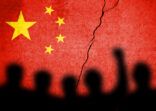The average global emerging market fund lost 12.2% in 2022, comfortably mid-table, and a creditable performance in a year when there were many headwinds for the asset class: a strong dollar, rising US rates, widespread risk aversion and, of course, the Russia/Ukraine crisis. This year has been a similar picture with the average emerging market fund up 1%, not as strong as, say, technology or Europe, but not as weak as Japan.
The role of the twin Asian behemoths of India and China has been complicated. In 2022, a strong performance from India undoubtedly helped offset the weakness in China. This year, an early boost from Chinese markets as the region reopened has faded, while the Indian market is seeing a readjustment. Instead, strength has come from Korea and Taiwan, parts of Latin America and Eastern Europe.
This highlights the problems of making any judgements about the future of emerging markets: there are a lot of different countries, with a lot of – often competing – drivers. Latin America is benefitting from its status as a ‘safe’ source of commodities, away from Russia and the Middle East; Eastern Europe is bouncing after being hit hard last year, while China and parts of Asia are beneficiaries of post-Covid reopening.
Resilience to the Western banking crisis
However, it does appear that a number of factors are coming together for emerging markets. For example, they are in markedly better economic shape than many expected. Chetan Sehgal, lead portfolio manager on the Templeton Emerging Markets investment trust, says: “Last year, many people were speculating on which emerging market would have a crisis. Some of the minor countries did have issues – Egypt – but the major banking issues have happened in the West. Emerging markets have proved resilient throughout.” This can be seen on emerging market debt spreads, which have moved in considerably versus the US, suggesting investors see emerging markets as less risky.
Growth rates still look encouraging. In its most recent economic outlook, the IMF said: “This year’s slowdown is concentrated in advanced economies where growth is expected to fall to 1.3% this year before increasing modestly next year. By contrast emerging market and developing economies are already pushing ahead in many cases with year-end growth accelerating to 4.5% this year from 2.8% last year.”
In its previous outlook, the IMF said emerging market and developing economies had already bottomed out as a group. It pointed out that together, China and India would account for half of global growth this year, while the United States, and the Euro-area combined would account for only 10%. It projected the real GDP growth rate at 5.3% for emerging and developing Asia’s in 2023 and 5.1% in 2024. Latin America and Central/Eastern Europe are lower, but still compare favourably to the projections of 1.3% and 1.4% for advanced economies.
Patrick Zweifel, chief economist at Pictet Asset Management, says emerging markets may also throw off inflationary pressures earlier than their developed market peers. He says: “Emerging markets have been more cautious on economic policy and in many cases started to tighten rates before developed markets. Brazil, for example, first raised rates in March 2021, compared to March 2022 for the US. The lag has already impacted the inflation rate in emerging markets. Also, labour markets are generally looser, meaning wage growth is not as persistent.” He also points out that the contribution from services, where inflationary pressures have been higher, is much lower for emerging market economies.
He believes the reopening of the Chinese economy will be a galvanising force across emerging markets: “The pace of growth has gathered momentum in China, looking at indicators such as traffic congestion and box office revenues. Sentiment has jumped already.” He sees a significant improvement in consumption ahead with Chinese consumers holding a war chest of pandemic savings that will be deployed in the real economy.
He sees four factors combining for emerging markets: “Firstly, there is emerging market growth itself, which has accelerated beyond four year moving average. China is a positive factor. Then the US economy is neither too strong or too weak. The combination of weaker dollar with China’s recovery is favourable for stronger commodities prices. The growth gap between emerging markets and developed markets has reached levels not seen for the past 10 years.”
Underowned and underloved?
Economic growth does not translate automatically into stock market growth. However, emerging markets have valuations in their favour. The aggregate price to earnings ratio for companies in the MSCI Emerging Markets index is 12.4x, compared to 18.1x for the MSCI All World index. The dividend yield is 3.3%, compared to 2.2%.
Seghal says: “Emerging markets are underowned, undervalued and, more importantly, under-appreciated. Most people are still thinking of emerging markets as they were in the 1990s. There is a lot of change and a huge amount of optimism in many areas.” He gives the example of the recent US guidelines on the manufacturing of electric batteries: “The biggest beneficiaries seemed to be the Korean companies, so we’ve seen a big bull market in this area.”
There is an issue on whether US demand will hold in areas such as semiconductors, but he believes we may be close to the bottom. “A lot of green shoots from what appeared to be doom and gloom last year.”
There are still risks. The global economy remains fragile. The IMF says: “An escalation of the war in Ukraine remains a major threat, and could destabilise energy and food markets, and further fragment the global economy. A sudden reprising in financial markets could tighten financial conditions, especially in emerging market and developing economies.”
Equally, there is the persistent sentiment problem for emerging markets. The asset class has been out of favour for some time. While this has left valuations low, it also means that investors need to reverse some long-held concerns. China has become a dominant part of the index and therefore emerging market sentiment is inevitably influenced by views on its relative strength and stability. However, the tide appears to be turning for the sector.
This story first appeared on our sister publication, Portfolio Adviser.

















